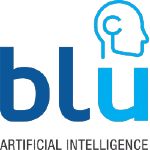
AI Ethics in Practice: From Principles to Implementation
AI Ethics is More Than Just a Buzzword AI is [...]
AI Ethics is More Than Just a Buzzword
AI is rapidly transforming industries, but without ethical guidelines, AI can create serious risks—bias, misinformation, privacy violations, and regulatory breaches.
72% of business leaders say ethical AI is critical, yet only 25% have an AI ethics framework in place.
What happens when AI lacks ethical oversight?
❌ Bias in AI hiring tools can lead to discriminatory hiring decisions.
❌ AI-driven misinformation can spread false narratives.
❌ Data privacy risks can expose sensitive customer information.
AI ethics isn’t just about compliance—it’s about building AI that is fair, explainable, and trustworthy. In this guide, Blu outlines a practical AI ethics framework, ensuring AI systems are responsible, transparent, and aligned with societal values.
The 4 Pillars of Ethical AI Implementation
1️⃣ Fairness & Bias Mitigation
Key Question: Does AI treat all users fairly, regardless of gender, race, or background?
The Challenge: AI models often reflect biases in historical data, leading to unfair decisions in finance, hiring, and healthcare.
Best Practices for Ethical AI:
- Conduct regular AI bias audits to identify and eliminate discrimination.
- Use diverse training datasets to prevent AI from reinforcing systemic biases.
- Implement algorithmic fairness metrics to measure AI decision equity.
Blu’s Approach: We help companies audit AI models for bias and ensure fairness in automated decision-making.
2️⃣ Transparency & Explainability
Key Question: Can users understand how AI makes decisions?
The Challenge: Many AI models operate as “black boxes,” making decisions without explainability, leading to:
❌ Lack of accountability for AI-driven errors.
❌ Compliance risks with regulations like the EU AI Act.
❌ Erosion of trust in AI systems.
Best Practices for Ethical AI:
- Use Explainable AI (XAI) frameworks to ensure decision transparency.
- Provide clear documentation on AI models for regulatory compliance.
- Train employees on how to interpret AI-driven insights.
Blu’s Approach: We develop AI explain ability solutions that ensure AI decisions are transparent and justifiable.
3️⃣ Privacy, Security & Data Ethics
Key Question: Does AI respect user privacy and protect sensitive data?
The Challenge: AI models require large volumes of data, increasing the risk of:
❌ Unauthorized data collection that violates GDPR & CCPA.
❌ AI-driven cyberattacks that exploit machine learning vulnerabilities.
❌ AI models memorizing personal data, leading to compliance issues.
Best Practices for Ethical AI:
- Implement privacy-preserving AI techniques (e.g., federated learning).
- Ensure AI systems comply with global data protection laws (GDPR, CCPA, AI Act).
- Conduct AI security audits to prevent adversarial attacks.
Blu’s Approach: We provide AI risk & security assessments to ensure AI models protect user data.
4️⃣ AI Accountability & Governance
Key Question: Who is responsible when AI makes a mistake?
The Challenge: Many companies lack clear AI governance structures, leading to:
❌ No accountability for AI decisions.
❌ Failure to comply with AI regulations.
❌ Reputational damage when AI systems go wrong.
Best Practices for Ethical AI:
- Establish AI governance committees to oversee ethical AI use.
- Assign AI risk management roles to ensure regulatory compliance.
- Develop AI ethics playbooks to guide responsible AI adoption.
Blu’s Approach: We help organizations build AI ethics & governance frameworks that ensure accountability.
A Step-By-Step Framework for Ethical AI Implementation
🔵 Step 1: Conduct an AI Ethics Audit
✔ Assess AI models for bias, transparency, and compliance risks.
✔ Identify potential ethical gaps before AI deployment.
🔵 Step 2: Develop AI Ethics Guidelines & Governance Policies
✔ Define company-wide AI ethical principles.
✔ Align AI systems with global regulatory standards.
🔵 Step 3: Implement Bias Mitigation & Fairness Audits
✔ Regularly test AI models for biased decision-making.
✔ Use fairness metrics to ensure equal treatment across demographics.
🔵 Step 4: Enhance AI Explainability & Transparency
✔ Develop explainable AI models with user-friendly explanations.
✔ Train employees on interpreting AI decisions correctly.
🔵 Step 5: Monitor AI Risks & Continuously Improve Ethics Policies
✔ Track AI ethics KPIs (fairness, explainability, compliance).
✔ Update AI models to align with emerging ethical standards.
Final Thoughts: Ethical AI is a Competitive Advantage
Ethical AI is not just about avoiding fines—it’s about building trust. Companies that implement responsible AI governance will:
✅ Reduce legal & compliance risks by following global AI regulations.
✅ Increase customer trust & adoption by ensuring AI is fair & transparent.
✅ Improve AI performance & accuracy by eliminating bias & errors.
At Blu, we specialize in AI ethics, bias mitigation, and governance solutions, ensuring AI systems are compliant, fair, and accountable.
Want to build an ethical AI strategy? Let’s talk.
Share this article
Follow us
A quick overview of the topics covered in this article.
Latest articles
April 29, 2025
April 22, 2025
April 9, 2025


